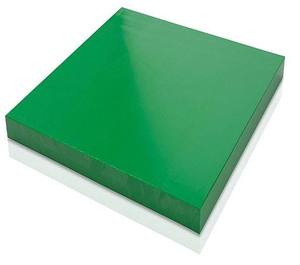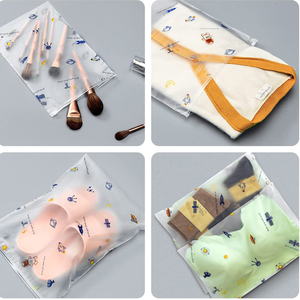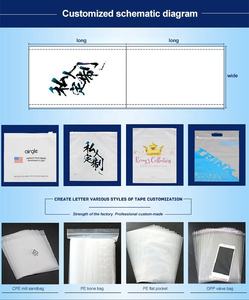
All categories
Featured selections
Trade Assurance
Buyer Central
Help Center
Get the app
Become a supplier

(86173 products available)


































Available in various types, polyethylene plastic sheet packaging is a durable, waterproof, and flexibile packaging solution for versatile uses. It is especially useful in industrial applications due to its ability to withstand harsh conditions and its resistance to chemicals.
The various types include:
Low-Density Polyethylene (LDPE) Sheets
Low-density polyethylene (LDPE) sheets are highly appreciated for their flexibility and transparency. Commonly used in making dust-proof covers, their great tensile strength makes them ideal for packaging delicate items. Withstands low temperatures, and hence, is suitable for refrigeration packaging.
High-Density Polyethylene (HDPE) Sheets
HDPE sheets are robust, offer high stiffness, and are made from more rigid plastics than LDPE. They are maiunly used in packaging for hazardous materials because of their molecular density which guarantees impermeability. Other uses include packaging for agricultural products, as well as outdoor furniture and playground equipment.
Polypropylene (PP) Sheets
Polypropylene sheets are clear, resistant to both heat and chemicals, and are used in diversified applications from packaging food products to manufacturing medical containers. Polypropylene is available in two forms: Bopp (bi-oriented polypropylene) and non-bopp. Bopp is thin, flexible, and almost transparent, making it ideal for industrial and commercial use. Non-Bopp film is thicker, with a matte finish and opaque properties making it ideal for block bottom paper bags, carrier bags, or satchels that are used for newspapers and other deliveries.
Linear Low-Density Polyethylene (LLDPE) Sheets
These films are manufactured by blending. They are produced using variegated manufacturing processes that, in combination, give them unique even characteristics. LLDPE sheets have superior puncture resistance and stretchability, making them appropriate for uses in industrial packaging, stretch films, and bags for construction and other textured products.
Polyvinyl Chloride (PVC) Sheets
Polyvinyl chloride (PVC) sheets are strong, inflexible, and resistant to various chemicals. They are commonly used in protective packaging for electronics, medical instruments, and other sensitive items. The rigid nature of unplasticised PVC sheets for packaging channels durability and protection to the covered items.
Polyethylene plastic sheets provide ideal packaging solutions due to their numerous features and benefits. They are suited and widely used in protecting and preserving products in versatile industries.
Durability and Strength
Polyethylene sheets are robust, tear-resistant, and makes for exceptionally strong packaging, meanwhile being lightweight. Their ability to withstand rough handling, stretching, and puncturing, ensures the items remain protected through storage and transport, making them highly durable packaging.
Water and Moisture Resistance
Polyethylene sheets are excellent at protecting products from water and moisture because of their waterproof characteristic. Being non-porous, they help prevent product spoilage, especially food, electronics, and sensitive materials. Besides, they guard against environmental factors like rain, snow, and humidity during outdoor storage or shipping.
Chemical Resistance
Polyethylene sheets resist chemicals, thus making them ideal for packaging hazardous materials or products that may react with acids, bases, or solvents. Their resistance to many chemicals, including alcohol, weak acids, and bases, guarantees the safe preservation of products such as cleaning supplies, chemicals, and even agricultural products like fertilizers.
Versatility and Customization
Polyethylene sheets find versatility in their application across multitudes of industries. They are manufactured in various thicknesses, dimensions, and finishes, and in clear, frosted clear, opaque, and black colors. They can be further tailored with prints or added features like anti-static properties, making them suitable for unique product needs. Be it packaging food, industrial products, or consumer goods, polyethylene sheets are a go-to solution for packaging.
Cost-Effectiveness
Polyethylene sheets have a low production cost compared to many other materials, hence making them a very cost-effective option. They are lightweight, hence reducing shipping costs. Their combination of durability, versatility, and customization, make them appealing for manufacturers and businesses alike.
Polyethylene plastic sheet packaging finds diverse commercial uses due to its robustness, flexibility, and resistance to moisture and chemicals. This makes them ideal for packaging numerous products across variegated industries.
Bags and Pouches
Polyethylene plastic sheets are often used in making bags and pouches for both retail and industrial applications. This includes making shopping bags and produce bags for the food industry, which require flexibility, strength, and resistance to moisture. Other applications include stand-up pouches for packaging snacks, cosmetics, and chemicals, where the ability to seal and protect the contents is critical.
Protective Packaging
In electronics, furniture, and machinery, high density polyethylene sheets are extensively used as protective packaging during transportation and storage in order to minimize dust, moisture, and physical damage. They may also be in the form of custom-cut sheets, thermoformed trays, or cushioning material to keep products safe from impacts and abrasions. Their lightweight nature also assists in reducing shipping costs.
Stretch Wrap and Pallet Wrapping
Polyethylene film is commonly used for industrial packaging applications such as stretch wrap and pallet wrap. It is used to unitize and stabilize multiple items on a pallet for shipment, this enables load containment during transit. The stretchability of polyethylene film aids in securely wrapping the load without causing too much rigidity, thus allowing for some movement without toppling over.
Labels and Stickers
Polyethylene sheets are also the preferred choice for producing durable labels and stickers that are waterproof and resistant to chemicals. They are widely used in labeling food containers, bottled drinks, and household cleaning products since they maintain adherence and legibility in environments that are wet or susceptible to diverse temperatures. Moreover, their flexibility allows them to conform to irregular surfaces for a more appealing and effective application.
Wraps and Covers
In the construction and agriculture industries, polyethylene sheets are used as moisture barrier wraps and vapor retarders for framing, as well as greenhouse films. When using them as temporary coverings for products, they help protect construction materials from rain, UV rays, and other elements. Due to their low cost and versatility, they have become a staple in both professional and DIY projects.
When selecting polyethylene plastic sheet packaging, there are several key factors business buyers should consider to ensure they are purchasing the right product for their needs.
Sheet thickness
The thickness of the sheet will affect the rigidity and transparency of the final product. Thicker sheets will be more rigid and opaque, and better for structural purposes. Conversely, thinner sheets will be more flexible and transparent, hence suitable for displays or windows.
Polyethylene type
Packaging buyers should stock sheets in low-density polyethylene and high density types, as well as polypropylene and copolymer, for diverse uses. Low-density sheets are flexible and ideal for quiet packaging, while high-density sheets are more rigid and suitable for heavy items. Polypropylene sheets have the additional advantage of being more transparent and resisting heat, thus suitable for premium packaging.
Finishes
Buyers should also select sheets of various finishes, such as clear, opaque, and textured, for distinct aesthetics and practical needs. Clear finishes are usable for windows or displays, while opaque ones are more suitable for confidential applications. Textured finishes enhance the grip and may be used in crafting or construction activities.
Sustainability
Retailers also have a choice of options to suit the growing preference for sustainable products. For environmentally conscious customers, there are recycled polyethylene sheets, as well as options to recycle after use. These sustainable alternatives will help reduce the environmental impact, thus aligning with green business practices.
Antistatic properties
Buyers with customers in need of antistatic polyethylene sheets for electronics or sensitive items protection should consider static-free sheets. These sheets are manufactured to limit electrostatic discharge, which may damage fragile components. Anti-static sheets have also Offset charges and outbreaks on surfaces, reducing potential handling risks.
A1: High-density polyethylene is extremely resistant to UV rays, moisture, and weather elements. This makes it suitable for outdoor furniture, playground equipment, and marine products, which require durability over long periods of exposure to outdoor elements.
A2: Clear polyethylene sheets are ideal when transparency is required, such as for a display window. Conversely, opaque polyethylene sheets do not allow any light to pass through and hence, are suitable for blocking light and vision and for general packaging purposes.
A3: Yes, many polyethylene sheets are indeed recyclable. They are typically marked with recycling code ‘2’ or ‘4’, which manufacturers can accept at most recycling centers, albeit the recyclability may vary based on the polyethylene type and local recycling capabilities.
A4: To maintain eco-friendly practices, businesses can choose recycled polyethylene products, as well as help promote the recycling of the sheets after their uses have expired. They can also opt for suppliers who use energy-efficient methods in production or those with a sustainability policy.
A5: Polyethylene sheets can be treated and modified by adding fillers to enhance their tensile strength or blending with other polymers for better heat and chemical resistance. Plasticizers may also be added to improve flexibility, while stabilizers are added to enhance UV and oxidative degradation.